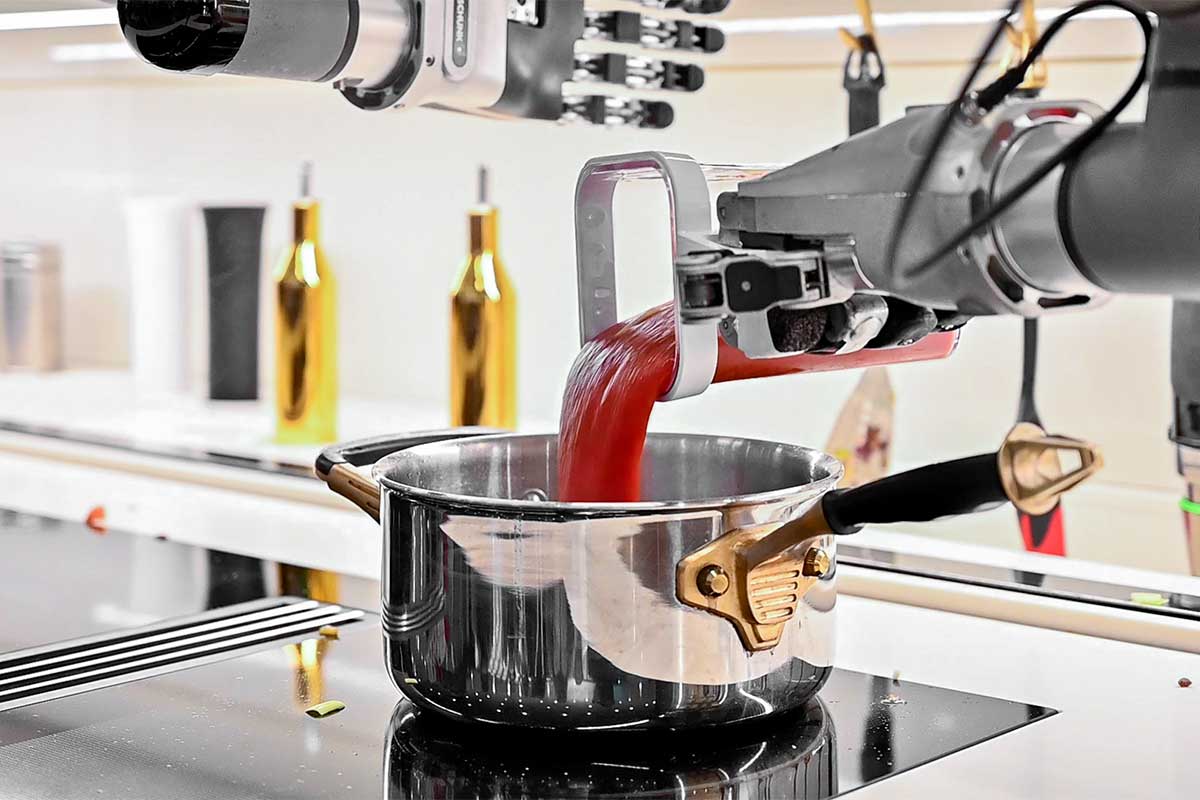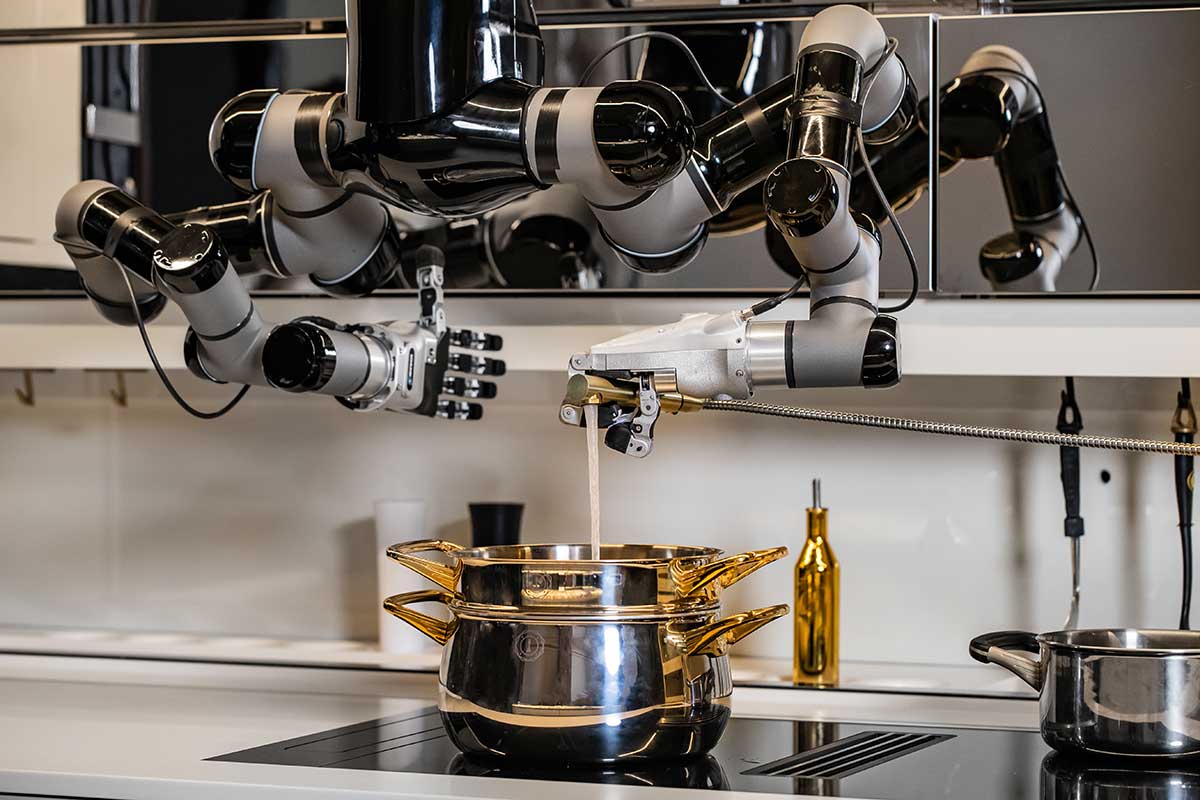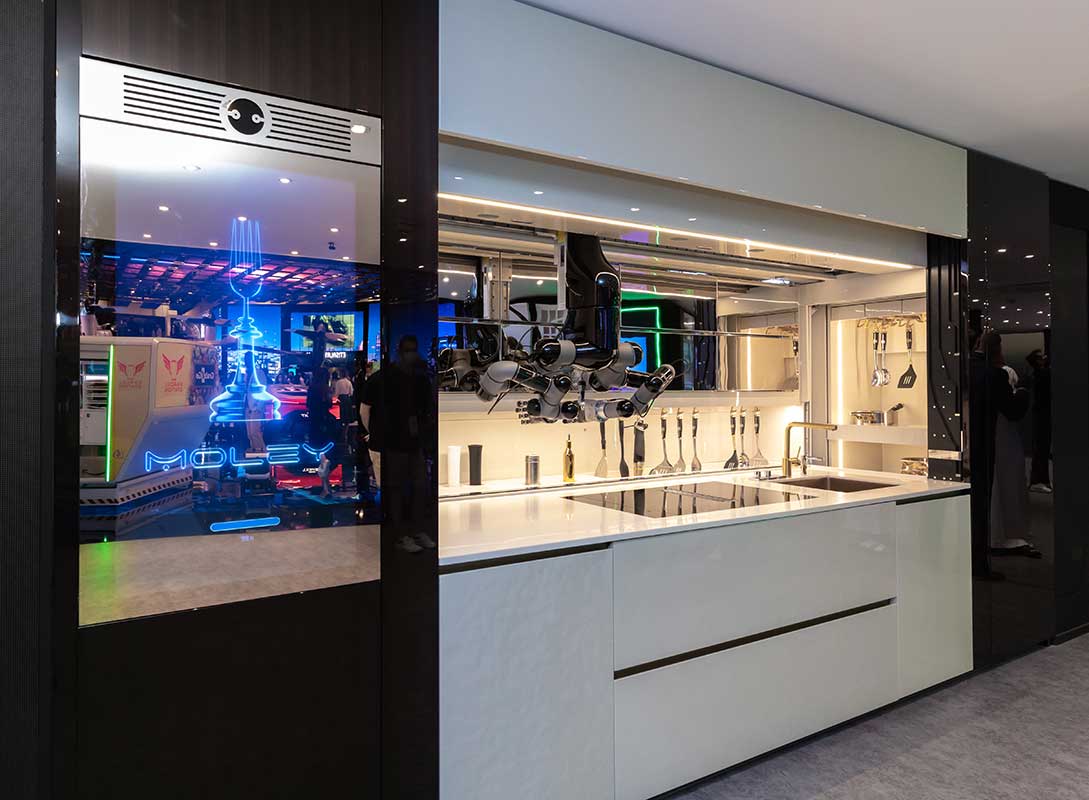This website uses cookies so that we can provide you with the best user experience possible. Cookie information is stored in your browser and performs functions such as recognising you when you return to our website and helping our team to understand which sections of the website you find most interesting and useful.
Mark Oleynik, creator of the world’s first robotic chef, dishes up the remarkable process behind Moley Robotic Kitchen
By Michelle Johnson | 19 February 2021 | Food & Drink
Six years in the making, the launch of the Moley Robotic Kitchen is taking the culinary arts to into the space age

Mechanical hands hover over the refined preparation station, whipping up a gourmet-style pasta dish. Perfect al dente spaghetti bubbles away on the stove while the dexterous limbs whisk a home-made sauce with expert precision. Watching the Moley Robotic Kitchen in action makes way for truly uncanny valley territory; like a 1950s vision of the future, where domestics chores are carried out by robot helpers. Except this high-tech chef already has 5,000 recipes in its database: the future is now.
British company Moley Robotics launched its innovative invention at the Gulf Information Technology Exhibition (GIMEX), Dubai on 6 December 2020, introducing the result of six years of research and development. 100 engineers and designers, and three award-winning chefs. The magic of the brand’s mechanical ‘chef ’ is in the remarkable anthropomorphic hands – developed in collaboration with world-leading German robotic company Schunk – which are fully articulated and covered in high-tech sensors to emulate human movement. It can use cookware and utensils, operate touchscreen appliances and tidy up kitchen surfaces when it’s finished, as well as learn how to use new pieces of equipment thanks to its adaptive operating system.
Through the kitchen’s user interface, you can access 5,000 recipes, or even record your own to add to the kitchen’s repertoire, including dishes created by award-winning chefs Tim Anderson, Nicole Pisani and Andrew Clarke. Mark Oleynik, computer scientist healthcare innovator and founder of Moley Robotics, explains his vision of man and machine.
Mark, please tell us more about the Moley Robotic Kitchen?
When we talk about automated cooking machines, we’re usually talking about something designed to make one specific product, based on repeating a sequence of operation with pre-measured timing and tools, and a pre-programmed process. Moley Robotics transformed this idea to create a machine with true flexibility. In general terms, Moley Robotic Kitchen reproduces the human process. Our user interface, with its recipe sharing platform, allows people to build their own recipes; the platform helps to translate these recipes to the robotics’ script language, so that the robot can execute any recipe. Even the first 30 recipes design for our launch showed a large range of different food options. One of my favourites is tom yum soup, as well the classic pasta dishes – carbonara, spaghetti bolognese and pomodoro. >>

The robotic arms are fully articulated to recreate human movements. How important was it to get this right?
From the very beginning, we know that was the only way this would work. Objectively, you can reduce a dish down to its ingredients and a sequence of operations, but there’s no way a machine can emulate the passion and creativity of a dish like a human chef can. Food is such a subjective experience, so we wanted the robot to imitate human movement, and capture some of the human process to recreate how a chef cooks their dish in a very accurate and reliable way. That’s why the motion of the arms has to be so human: it can more or less recreate the chef ’s original intention. It’s as if the chef has cooked for you.
What first inspired the concept?
Some people hunger for innovation, while others are looking for more pragmatic solutions. When you think about everything that has changed technologically over the last 50 years, the thing that remains the same is people. Everything that changes in our lives is designed to give us more options or optimise our time. We see this kitchen as something that helps to optimise our time at home, for example, by taking the 30 minutes to an hour that you might spend in the kitchen and sharing that time, instead, with your family. That was a major inspiration for us. Once we had the idea, our first step was building a prototype to prove whether it might be possible to build. Often for products, this stage is where the project ends, so you need to take a risk to make a product that really works. It’s been a long process of designing, testing, evaluating and improving. We found great partners and a team that could bring it to life.
How do you plan to develop the product?
We’ve developed two types of product – Moley Robotic Kitchen is for residential use and can support people in their everyday life. But we’ve also seen big demand from the commercial market and are developing a commercial product fit for restaurants, hotels, hospitals, care homes and other environments where an organised and volumized process of cooking is required. For example, it’s difficult to hire a great chef in a hospital, because creative and talented chefs would rather be in an environment – like a fine dining restaurant – where they can be more creative.
You launched the kitchen at GITEX in December. What’s next?
We began taking pre-orders when we launched the domestic kitchen and will be delivering the first products during 2021. We will work with each client to create a bespoke kitchen that fits their space and design preferences, and then it takes about three to six months to delivery. For any company, once you’ve built the first product, you’re looking to see what the next product could be, both for functionality but also price points. You want to develop the product line to offer plenty of choice. Our biggest challenge was building the original product, and I’m looking forward to creating more options, simplifying and optimising the kitchen.
Read more in Tempus Magazine issue 72, available to download now








